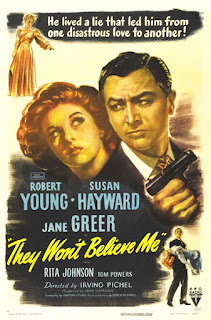Directed by Cy Endfield; produced by Sam X Abarbanel and Alan H Posner
Reporter Harry Mitchell (William Gargan) is sent to the hospital bed of colleague Allen Pierce (George Anderson) to find out what he knows about a mysterious book, the Argyle Album. Mitchell doesn’t get the chance to learn much, as, during his visit, Pierce dies, seemingly from a scalpel wound. The questions raised by the death, and by the Argyle Album, send Mitchell on a deadly search for gangsters, extortionists and traitors.
The Argyle Secrets is in many ways a typical B-movie from the Golden Age of Hollywood, and B-movies, in turn, are rather akin to the independent feature of today. Varying widely in quality, they have low budgets and largely unknown casts. One of the differences between yesterday’s B-movies and today’s independents is that the former’s plots were normally unimaginative and derivative. This characterises The Argyle Secrets.
William Gargan was a good actor – nominated for an Academy Award in another movie – who does what he can here. He is suitably tough and intelligent, conveying the impression of a man determined to be courageous, even when he doesn’t want to be. (Though his credibility may have been hurt in my personal estimation by resembling too much Sidney James, of the Carry On… series of farces.)
The other actors are capable, but no more so. Marjorie Lord is convincing as the obligatory femme fatale. The most recognizable minor player is, perhaps, Barbara Billingsley, later to portray June Cleaver in tv’s Leave It to Beaver, though Hogan’s Heroes’s John Banner portrays a villain.
The characters in the cast are interesting to different degrees, and are the best aspect of the film. They are not developed enough, however, and appear a bit too self-consciously based on other movies’ characters, especially Jack Reitzen as a Sydney Greenstreet-type personality. And one named Winter has a Mittel-European accent that is at odds with his attempt to hide his Nazi connections.
The story is a fairly standard one of the protagonist searching for an object, with the police on the trail of both the object and the protagonist, while villains of various shades try to outwit or kill both parties. Alfred Hitchcock popularised the term ‘MacGuffin’ for such objects in such films; it didn’t matter what it was, so long as it provided an excuse for mystery and action. Probably the most famous movie MacGuffin is the title statue in The Maltese Falcon.
In The Argyle Secrets, the object of everyone’s desire is a book containing the names of American Nazi-collaborators. Mitchell doesn’t know at first why it is important, and his rivals have several reasons for wanting it. The album in question illustrates some of the lackluster interest the writer seemed to have had in the actual story. The album’s name suggests a Scottish origin; the double-headed eagle on its cover implies Imperial Russian or Austro-Hungarian connections; yet it involves Germans and Americans.
The story is both lazy and shoddy. Mitchell learns of the album’s secrets too soon and too easily. Instead of uncovering them, he is simply told of them. The book’s pages contain numerous names, but only two other parties are searching for it. Why two? One is mentioned in the book and so wants to avoid condemnation for his past crimes; the other is intent on using the book for blackmail. The choice of villains and motives seems arbitrary.
Pierce, who brings the secrets to Mitchell’s attention, is murdered, and his murderers spend the movie seeking what the man they killed could possibly have been tricked or coerced into revealing. And, though Gargan effectively portrays Mitchell as a clever man who pieces together the puzzle over time, the conclusions to which he comes are not really supported by the clues given.
The Argyle Secrets is an adequate time-filler, though there are numerous other B-movies that do better with the same or less. What I thought of most after the film was over was that its director (who also wrote the screenplay) was also behind the camera for the 1964 war-blockbuster Zulu!















































